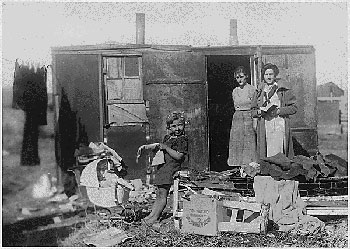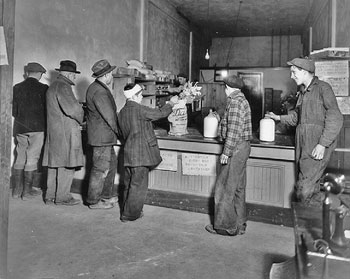
Source: Public Health nursing, Franklin D. Roosevelt Presidential Library and Museum,
Wikimedia
The Great Depression
Events that are closely related occur at different times in history. In fact, it is often said that “history repeats itself.” You probably know about the difficult economic conditions our country has experienced in the twenty-first century. Economists feared the United States would fall into a depression similar to the Great Depression of the 1930s. That didn’t happen; however, it is interesting to look back to the Great Depression, known for its high unemployment and other social and economic hardships, to discover that the tragedy of this period inspired the arts, especially in writing.
The literature during this period tended to be somber in tone, but in some cases it was hopeful and optimistic, predicting that things would get better. Keep in mind that tone expresses an author's attitude about a subject or situation. The author communicates tone to the reader through point of view, diction, and syntax.
Along with tone, writers vary the level of formality to make a point. The expectations of the intended audience and the overall purpose of the writing determine the level of formality that an author chooses. Levels of formality include the following: formal, semiformal (personal), and informal.

Source: Georgetown Relief Depot, 1932, Seattle Municipal Archives, Flickr
Writers also write for specific purposes. They may want to inform, to explore an idea, or to entertain readers. Writers may also wish to argue for or against an idea or condition in order to persuade readers to see their side of an argument. An important ingredient in developing purpose is to determine audience.
This lesson will help you evaluate changes in formality and tone within printed texts written for specific audiences and purposes. As you may have guessed, we will focus on writing produced during the Great Depression.